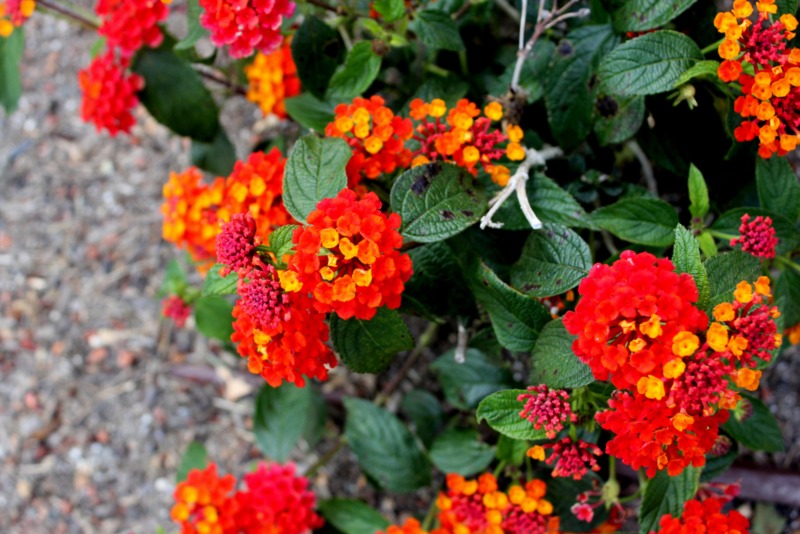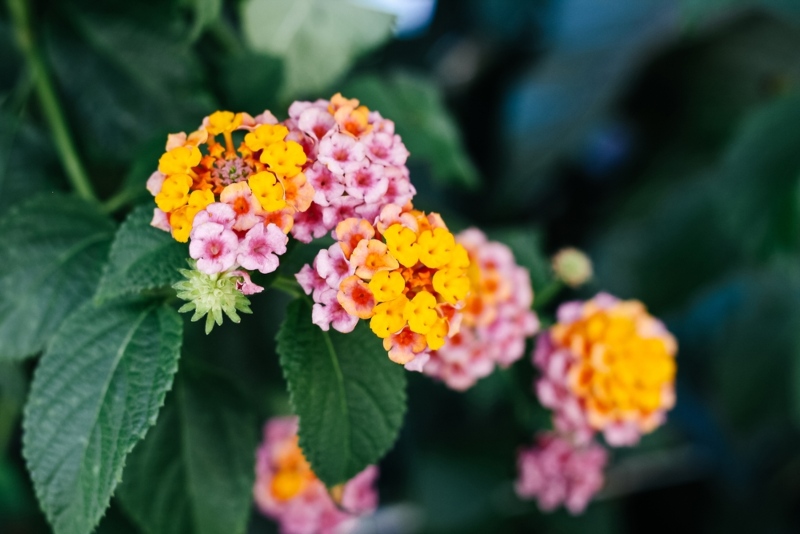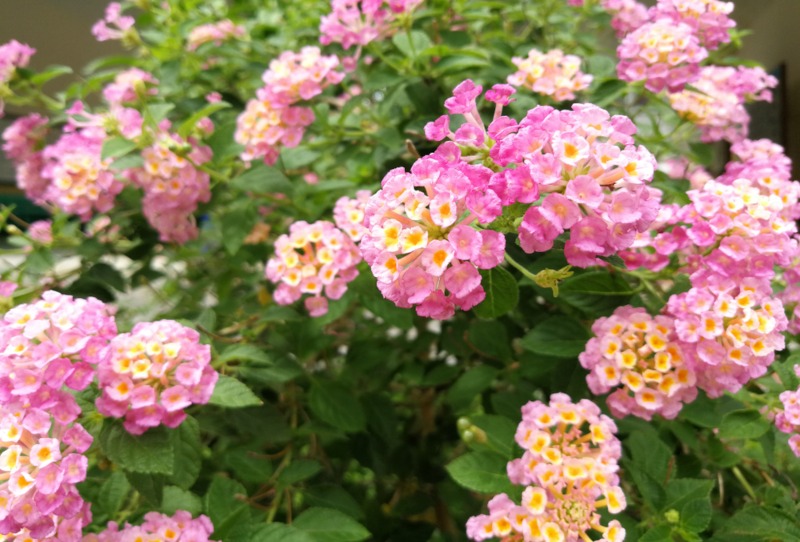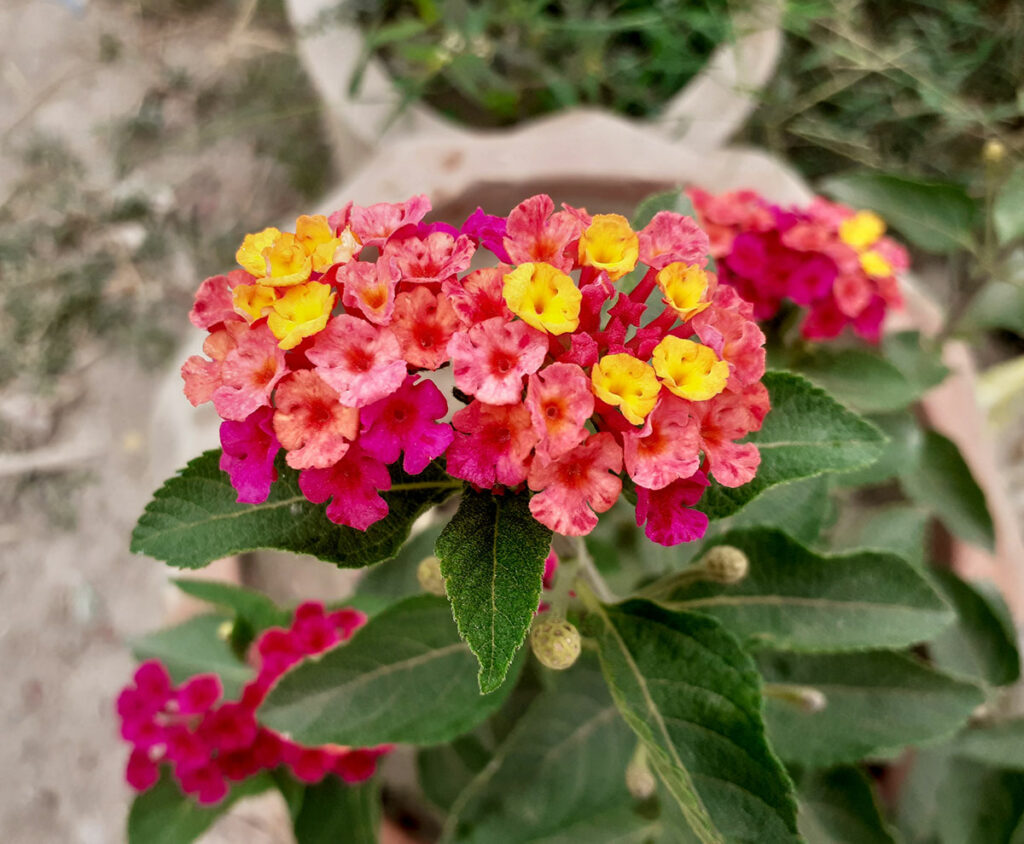Lantana plants are an excellent choice for landscaping because they are drought tolerant, require minimal maintenance, and provide beautiful flowers throughout the year. They also have a long history of use in traditional medicine.
There are different types of lantana plants, each with its unique characteristics.
This article discusses the differences between these varieties.
Crimson Lantana

The most common variety is called “Tropical” or “Crimson” lantana. This plant has small leaves that grow close together and produce red berries during late summer. It grows best in full sun but can tolerate partial shade as well.
Tropical Lantana does not need much water once established, so it makes a good choice if you live in a dry climate. However, it requires regular watering when young. If you plan to move this lantana into areas where there isn’t enough rain, be sure to bring along extra pots and soil mix.
Mountain Lantana

Another popular variety is known as “Mountain” lantana. Mountain lantana produces large, glossy green leaves which turn yellow in fall. Its growth habit is similar to tropical lantana, except its stems tend to arch over rather than grow upright.
Like tropical lantana, mountain lantana needs little care after planting. You should only fertilize it lightly every two weeks until spring.
Prairie Lantana
Prairie Lantana is native to North America and originally grew wild near prairies. It’s one of the few species of lantana that doesn’t flower at all unless planted next to other flowering shrubs. Instead, it sends out runners from underground rhizomes.
These rootlets form new plants that look very much like the parent plant. Prairie Lantana thrives in moist soils and prefers full sun. It can withstand light frosts without damage.
Evergreen Lantana
Evergreens do not lose their foliage seasonally. They keep producing fresh greenery through the winter months.
Unlike tropical lantana, evergreens don’t bloom in early spring. Their blooms appear later in the year, usually around July. Some people find them too spiky looking for a garden setting. Others enjoy the fact that they never go dormant.
Hybrid Lantana
Hybrid lantana combines traits from various lantana, including tropical, mountain, prairie, and even evergreen.
Hybrids often combine more desirable features from multiple parents while eliminating undesirable ones. For example, combinations may include larger leaves and fewer thorns.
Many hybrids are available today and offer many benefits compared to older varieties. They’re also easier to maintain because they require less frequent pruning.
Dwarf Lantana
Dwarf lantana is an easy-to-grow miniature version of the original. Most dwarf lantanas have been bred specifically for container use. Because they take up relatively little space, they make great choices for patio containers, window boxes, and hanging baskets.
They also work nicely in rock gardens and borders. In addition, dwarf lantanas are perfect for smaller spaces since they won’t get big and leggy.
Dwarf lantanas will thrive with minimal maintenance. Regular watering helps prevent disease problems. Fertilizing twice per month keeps your plants healthy and vigorous. Prune back any dead branches periodically.
Lantana Radiation
Lantana Radiation is prevalent in the Southwest US. It is easy to grow, drought-tolerant, and requires little care. The flowers are white, pink, or red with yellow centres, and they bloom from spring through fall. Lantana Radiation is commonly used as a border plant.
This plant needs good drainage. Make sure to water it sufficiently during the first growing season. Frequent watering helps the plant to establish its roots.
Over-fertilizing this plant will cause root rot. Also, be careful when pruning this plant because it has sharp thorns on its stems. When trimming, always wear gloves so that you don’t get cut by these spines.
Pumpkin Patch Lantana
The Pumpkin patch lantana is another type of lantana which is native to North America. Its leaves are greenish-yellow, while its flower petals are bright orange. These plants require total sun exposure for the best growth. They need ample amounts of moisture throughout their life cycle.
During the winter months, keep the temperature at around 50 degrees Fahrenheit. Watering should only occur once every two weeks. Do not let the foliage dry out completely.
The pumpkin patch lantanas thrive in areas where there is plenty of sunlight. Therefore, you must provide adequate light for this plant. Keep an eye on the amount of fertilizer that you give to this plant. Overfertilizing may lead to stunted growth.
New Gold Lantana
New Gold Lantana is a low-mounding evergreen shrub first developed by hybridizing Lantana Camara and Montevidensis.
New gold lantana is more resistant to cold weather. That said, it prefers moist, fertile soil and thrives in full sun and partial shade. It blooms all year round, with flowers appearing in clusters along branches.
This lantana is suitable for indoor and outdoor gardens. It’s advisable to repot this plant after flowering. Repotting ensures proper air circulation within the pot.
Bandana Pink Lantana
Bandana Pink Lantana comes in different colors, white, red, orange, yellow, purple, blue, green, lavender, black, brown, and cream. It is known for being:
- Hardy
- Pest-free
- Heat-tolerant
- Highly adaptable to various environments
People plant it often near swimming pools and hot tubs due to its ability to withstand high humidity levels. Bandana lantana is also ideal for landscaping purposes since it provides excellent coverage.
It is important to note that this variety of lantana is highly invasive. As soon as it starts spreading, it quickly takes over large areas. It spreads via underground rhizomes.
Once established, it becomes difficult to remove without causing damage to surrounding vegetation. To prevent this from happening, try to control the spread using herbicides.
Conclusion
If you’re looking for something different than traditional roses, look no further. Lantana offers beautiful blossoms in shades of pink, orange, purple, lavender, and white. With their unique shape and vibrant colors, they make lovely additions to any outdoor space.
And since they bloom almost continuously through spring and summer, you won’t have to worry about buying replacements later on. Plus, they don’t need pruning as most flowering shrubs do.






